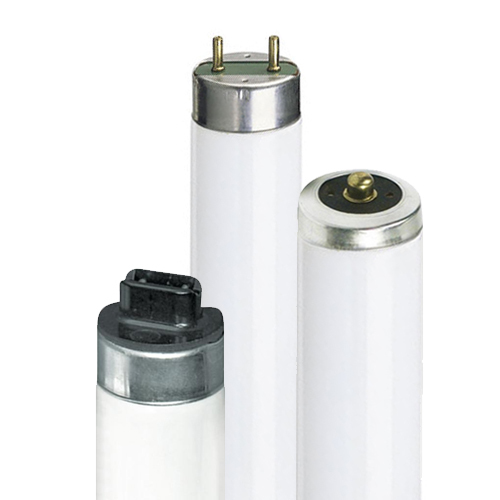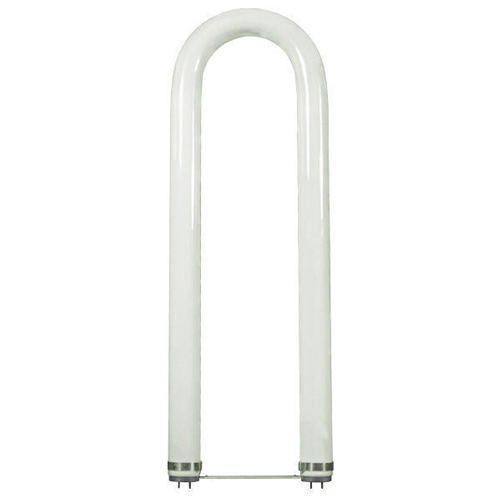Fluorescent Tubes
FLUORESCENT TUBES
Fluorescent lights provide good lighting with lower energy use than incandescent light bulbs. They require modifying the operating voltage with a transformer or ballast, and bulbs must be matched to the ballast in a fixture.
Industrial and commercial fixtures have been designed for a variety of bulb shapes including straight, circline and u-bend tubes. Strait fluorescent tubes are coded with the letter T and a number which gives the diameter in eighths of an inch. For example, the smallest, T2 is only one-quarter inch in diameter while the T8 is a common size, one inch in diameter. The length is usually indicative of the wattage. Most tubes have two pins on the ends, but single pins for instant-start fluorescents may be found on long industrial bulbs. Mogul bi-pin bases may be found on high-wattage pre- heated bulbs. The code following a slash on a fluorescent tube indicates the color, which is produced by a phosphor coating on the inside surface of the tube.
Fluorescent tubes are available in many shades of white, as measured in Correlated Color Temperature (CCT) on the Kelvin Scale. For many years, Cool White at 4100K was the standard. Today, Warm White (2700K) is becoming more popular, as it more closely resembles the color of traditional incandescent bulbs. There are also special application fluorescent tubes that produce a full spectrum and those that match the color of daylight.



